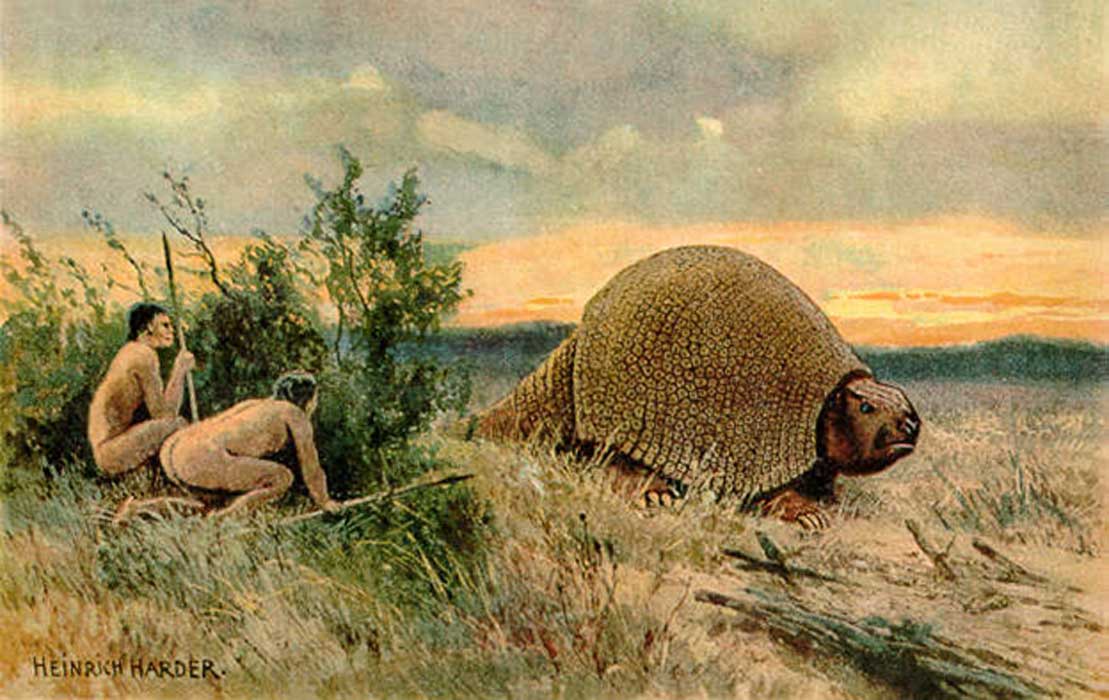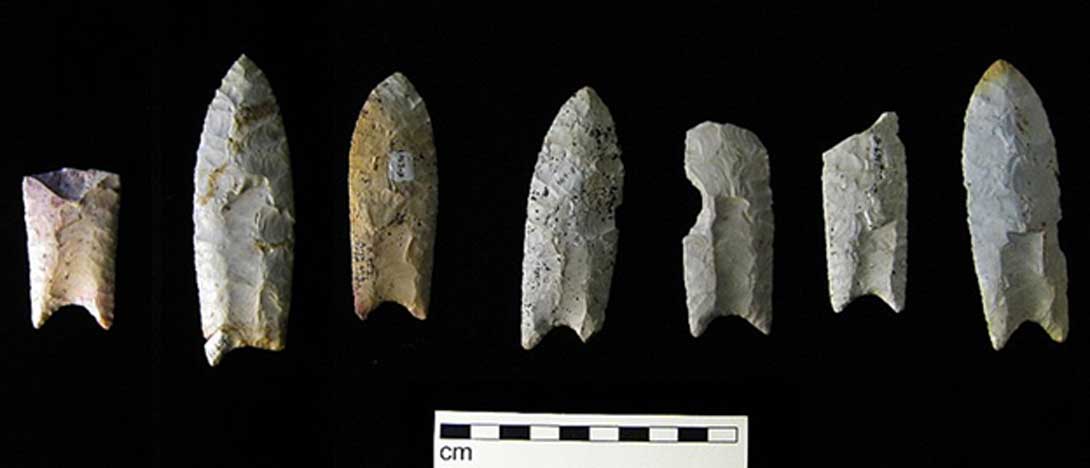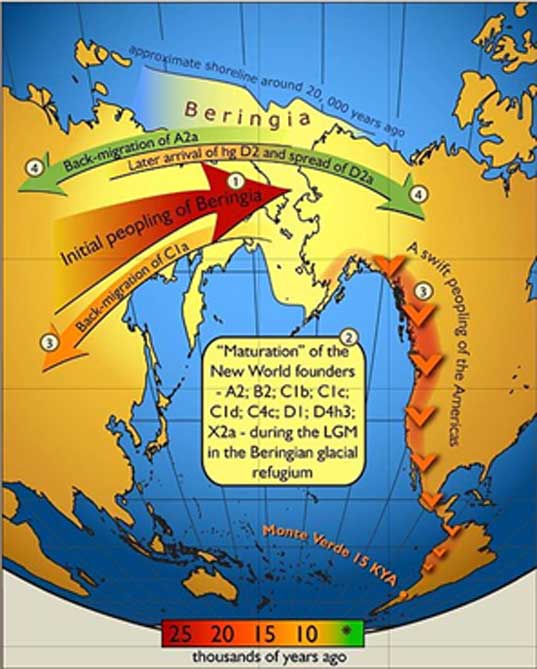
The Great American Origins Debate: Clovis First vs Pre-Clovis
The standard school curriculum teaches that Native Americans descended from a small band of Paleo-Indian people from north-east Asia who walked across the now-vanished Beringia land-bridge between Siberia and Alaska, sometime during the final glacial episodes of the late Pleistocene period between 12,000 and 15,000 years ago. Known as ‘Clovis First’ theory, after the site discovered near Blackwater Draw in eastern New Mexico in the 1920s, where a mammoth skeleton that was laid next to a spearhead dated as being from 11,500 years ago, this became the predominant ‘first people’ hypothesis among archaeologists during the latter half of the 20th century, until the recent identification of a pre-Clovis culture.

The blades of the Clovis culture had distinctively shaped stone spear points, bifacial and typically fluted on both sides, known as the Clovis point. (Public License).
Sites identified as Clovis were occupied between 11,400 BC and 10,800 BC and evidence tells archaeologists that the people’s lifestyles were dominated with hunting and trapping now-extinct megafauna; mastodons, mammoths, wild horses and bison, and collecting plant foods. In 2017, scientists successfully read the genetic sequence of a baby from a Clovis burial site in Montana, named ‘Anzick-1' which dated to 10600 BC. This revealed that Clovis people were the: "direct ancestors of roughly 80% of all living Native American populations in North and South America” with the remaining 20% having come from ancestors who entered in later waves of migration. These findings also support the pre-Clovis hypothesis that modern Native Americans are descended from Paleo-Asian populations who reached the Beringia crossing between 32,000 and 18,000 years ago.

The Beringian Standstill and Spread of Native American Founders. (Public Domain).
Were the Clovis Immigrants Frist?
But were these Clovis immigrants really the first human inhabitants who created a widespread culture in the New World? Or did another, unrelated group of people precede them? This question has been bitterly debated for several decades and although the Clovis culture has been held as the mother of North American indigenous cultures, a range of new archaeological discoveries suggests another culture with different technologies existed either prior to, or concurrently, with Clovis people.
During the 19th and 20th centuries there had always been a contingent of ‘Americanist' scholars who claimed that there existed archaeological sites in the Americas dating between 15,000 to as much 100,000 years ago, and older!
Pre-Clovis claims were widely dismissed among mainstream archaeologists and it was not until the 1970s that ‘genuine’ sites predating Clovis were discovered including Paisley Caves in Oregon, Cactus Hill in Virginia, Meadowcroft Rockshelter in Pennsylvania and Monte Verde, in Chile. It wasn’t until 1999, however, at a conference in Santa Fe, New Mexico called ‘Clovis and Beyond’ where almost irrefutable evidence of pre-Clovis people was presented, that the tide began to turn.
- A Conspiracy of Silence: Are We Older Than We Think We Are?
- Prehistoric Romeo and Juliet Lived Apart: But Why? The People of the Shoals and The People of the Hills
- Hunting South American Gold
The four sites mentioned above are now often referred to as ‘pre-Clovis’ as it has been proven to a majority of archaeologists that they were occupied a few thousand years before Clovis people were believed to have arrived in North America. The multitude of artifacts gathered at these sites have identified that these pre-Clovis people had: “broader-range lifestyle, more approaching Archaic period hunter-gatherers.”




